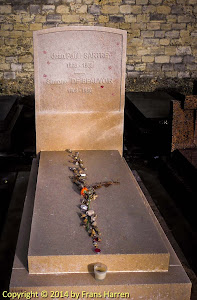Jean-Paul Sartre
Jean-Paul Charles Aymard Sartre (21 June 1905 – 15 April 1980) was a French philosopher, playwright, novelist, screenwriter, political activist, biographer, and literary critic. He was one of the key figures in the philosophy of existentialism and phenomenology, and one of the leading figures in 20th-century French philosophy and Marxism.
His work has also influenced sociology, critical theory, post-colonial theory, and literary studies, and continues to influence these disciplines. Sartre has also been noted for his open relationship with the prominent feminist theorist Simone de Beauvoir.
He was awarded the 1964 Nobel Prize in Literature but refused it, saying that he always declined official honors and that "a writer should not allow himself to be turned into an institution".
See: wikipedia
Simone de Beauvoir
Simone-Lucie-Ernestine-Marie Bertrand de Beauvoir, commonly known as Simone de Beauvoir (9 January 1908 – 14 April 1986), was a French writer, intellectual, existentialist philosopher, political activist, feminist and social theorist. She did not consider herself a philosopher but she had a significant influence on both feminist existentialism and feminist theory. Beauvoir wrote novels, essays, biographies, an autobiography and monographs on philosophy, politics and social issues. She is best known for her novels, including She Came to Stay and The Mandarins, as well as her 1949 treatise The Second Sex, a detailed analysis of women's oppression and a foundational tract of contemporary feminism.
See: wikipedia
Montparnasse Cemetery
Cimetière du Montparnasse is a cemetery in the Montparnasse quarter of Paris, part of the city's 14th arrondissement.
History
Created from three farms in 1824, the cemetery at Montparnasse was originally known as Le Cimetière du Sud (Southern Cemetery). Cemeteries had been banned from Paris since the closure, owing to health concerns, of the Cimetière des Innocents in 1786. Several new cemeteries outside the precincts of the capital replaced all the internal Parisian ones in the early 19th century: Montmartre Cemetery in the north, Père Lachaise Cemetery in the east, and Montparnasse Cemetery in the south. At the heart of the city, and today sitting in the shadow of the Eiffel Tower, is Passy Cemetery.
Notes
Montparnasse Cemetery is the eternal home of many of France's intellectual and artistic elite as well as publishers and others who promoted the works of authors and artists. There are also monuments to police and firefighters killed in the line of duty in the city of Paris. There are also many graves of foreigners who have made France their home.
The cemetery is divided by Rue Émile Richard. The small section is usually referred to as the small cemetery (petit cimetière) and the large section as the big cemetery (grand cimetière).
Because of the many notable people buried there, it is a highly popular tourist attraction.
See: wikipedia













0 comments:
Post a Comment